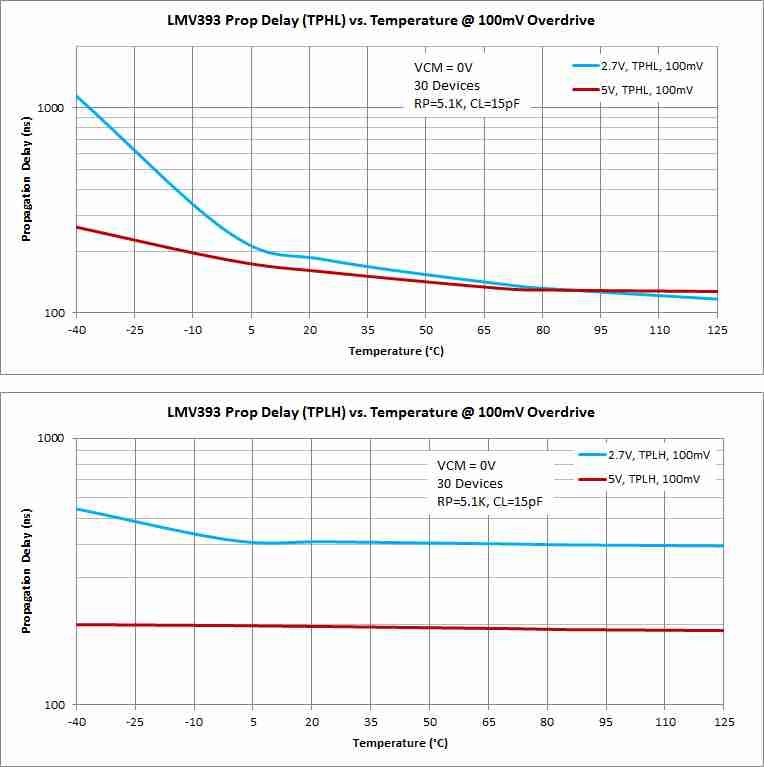Other Parts Discussed in Thread: LMV393
Hi team,
My customer is designing the schematic with LMV339. The customer would like to know the propagation delay time.
Could you please give your advice for below question?
- Figure 5 and 6 showed the propagation delay when the over drive voltage is 100mV. How much the time will be change if over drive voltage is increase? Slope is same in spite of the over drive voltage condition?
- Test condition of the figure 5 and 6 is only TA = 25C. Could you provide the data that TA = -40C and TA = 100C when the supply voltage is 3.3V? The customer need the data as soon as possible. If we can estimate the data, please tell me.
Regards,
Yoshi


